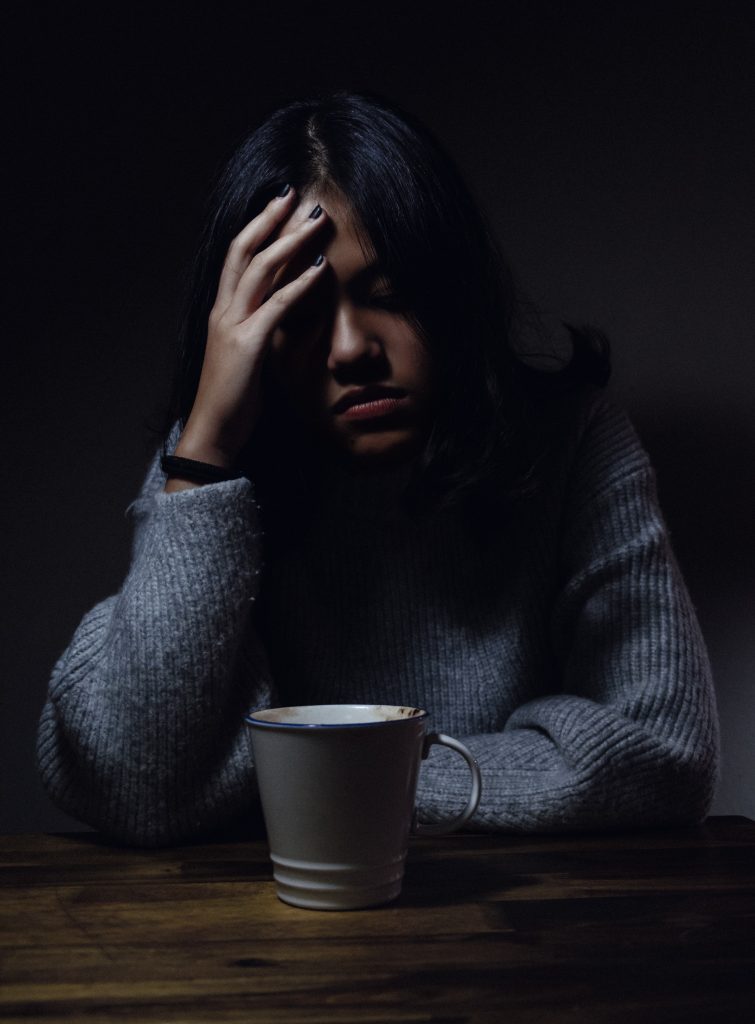
A helpful starting point in understanding anxiety is to know the most common types of anxiety. In this post I’m going to describe the symptoms of the the different anxiety disorders. Being familiar with the different types of anxiety is important for a few reasons.
First, you can read through this post and see if your symptoms group together within one type of anxiety or if you have a variety of different symptoms that cross the different disorder types. Then when you go to see your doctor or therapist or the person who prescribes your medication, you can explain that you think you are having symptoms of x disorder and you can have a more productive conversation.
Second, this knowledge can lead you to more information about your symptoms and about potential treatments that can help.
If you’re curious about which of these disorders is most common, the National Institute of Health has some great information here.
Illness Anxiety Disorder

People with illness anxiety disorder are preoccupied and worried about pain, bodily sensations, and the possibility of a physical illness or problem. They worry that they already have or may develop a serious medical condition. Small signs or symptoms easily alarm people with Illness Anxiety Disorder and they often worry excessively about minor physical changes. Behaviorally, illness anxiety is often associated with health-related checking behaviors, such as looking up medical information online, checking the body for signs, repeated doctor visits or tests, or trips to the emergency room. People with illness anxiety typically experience a short term reduction in their anxiety after checking but they anxiety returns when new signs, symptoms, or worries emerge. For example, someone worried about having a heart attack my temporarily feel relieved after results from an EKG come back normal. However, if they notice a twinge or funny feeling in their chest the next day, the anxiety returns.
Social Anxiety Disorder

Social anxiety disorder is defined by a fear of being judged, evaluated, or of doing something embarrassing in front of other people. This includes things like interacting with others (making small talk, sending texts, making phone calls), where you might be observed (eating in public, writing in public, having photos taken), or performance situations (giving a speech). People with social anxiety worry excessively about doing or saying something stupid, being awkward, and ultimately being rejected by other people. They often avoid social situations and become extremely lonely and isolated due to their fear of others. If they have to do something social, they usually endure it with extreme distress and often avoid in subtle ways, for example sitting near the edge of the group, not making eye contact, spending time on their phone or some other distraction. This fear also causes significant distress and gets in the way of people having meaningful relationships with friends and romantic partners and may interference with academic and/or work. For example, fears of speaking up in class, asking a teacher or professor questions, or engaging in small group work may cause someone to have lower grades because of their social anxiety symptoms.
The more severe form of this disorder is selective mutism, when someone refuses to speak in front of others.
Specific Phobia

Specific phobias include intense fear and anxiety about certain specific objects. In children sometimes this looks like crying, throwing a tantrum, excessive clinginess, or freezing. The most important thing to look for here is that the fear or anxiety causes distress or interference. For example, many people don’t like being around bees because of the possibility of being stung but that doesn’t mean they have a phobia of bees. But if someone refuses to leave the house or refuses to attend social gatherings outside in the summer, that could be a phobia because it’s getting in the way. The symptoms also have to be persistent for at least six months. So if a child is fearful of clowns once at a carnival but has no trouble later watching a movie with clowns or will go to a carnival three months later, there isn’t enough evidence for a phobia. There are several different types of phobias:
- Animals (snakes, insects, dogs, etc.)
- Natural Environment (heights, storms, water, etc.)
- Blood-injection-injury (medication procedures, getting shots)
- Situational (airplanes, bridges, elevators, etc.)
- Other (loud sounds, people in costumes, choking, etc.)
Panic Attacks and Panic Disorder

I often hear people talk about “anxiety attacks” and this is a real pet peeve of mine because there is no such thing as an anxiety attack.
A panic attack is a sudden, intense rush of fear that often feels like it comes out of nowhere. It comes on quickly and usually reaches its most intense peak within 10 minutes of starting, then symptoms gradually get better over the next hour or so. Basically a panic attack is a kind of false alarm. Your body is giving you the fight or flight response (ALARM! DANGER!) but there is no apparent danger, so these symptoms can be really scary. If your anxiety lasts for hours or all day, you are not having a panic attack.
Panic attacks have four or more of the following symptoms, all happening at the same time in a kind of coordinate response:
- Heart palpitations, pounding heart
- Sweating
- Trembling or shaking
- Feeling of choking
- Chest pain or discomfort
- Nausea or abdominal distress
- Feeling dizzy, unsteady, light-headed or faint
- Chills or hot flashes
- Numbness or tingling
- Feelings of unreality (like things are happening in a dream) or that you are detached from yourself
- Fear of losing control
- Fear of “going crazy”
- Fear of dying
Having panic attacks does not necessarily mean you have a panic disorder. Some people have panic attacks occasionally and are not troubled by them. About 11% of the general population has panic attacks in a given year while only about 2-3% have panic disorder.
Panic disorder occurs when the panic attacks cause a significant disruption in your life. This usually includes worry about having another attack or about having the symptoms in the future (for example, “What I get dizzy like that again at work?”). You might be preoccupied with thoughts about the possibility of having the symptoms again and worry about the consequences of having the feelings. Disruption can also come from changes you make in your life to avoid the possibility of having another panic attacks. This could be avoiding certain places that you worry might cause the panic attack. For example, if your first panic attack happened in a grocery store you may avoid going to the grocery store alone or go to a smaller grocery store closer to home. Other changes might be avoiding situations that might bring on sensations like the panic attack. For example, you may avoid drinking coffee because the caffeine leads to feeling like your heart is racing, which reminds you of the panic attack. Or you may avoid hot rooms because you felt flushed and were sweating during the attack.
Agoraphobia

Agoraphobia is often related to panic attacks because it involves fear and anxiety about specific kinds of situations because it might be difficult to escape or get help in response to physical symptoms (often the panic attack symptoms). Although people commonly explain agoraphobia as “fear of the marketplace” or “fear of open spaces”, there are actually five commonly feared situations, including:
- Public transportation
- Open spaces like parking lots or bridges
- Enclosed places, like stores or movie theaters
- Standing in a line or being in a crowd
- Being outside the home by yourself
People who are fearful of these places almost always avoid them or endure them with extreme distress. It’s also common for people with agoraphobia to recruit someone else to go with them to these places if they have to. These people are safety signals and make the experience more tolerable. Ultimately in treatment these safety people have to be phased out so that the person with agoraphobia can learn to become independent again.
Generalized Anxiety Disorder

GAD is a disorder characterized by excessive worry about a lot of different things almost every day. People with GAD describe worrying about a range of topics, including work or school, their health, the health of loved ones, finances, social situations and relationships, politics and world affairs, and minor things. People with worry describe that it’s very hard to stop once it gets started and that it seems excessive or out of proportion to the situation. In addition to this chronic and persistent worry, GAD is associated with several of the following symptoms:
- Restlessness
- Feeling keyed up or on edge
- Fatigue
- Difficulty concentrating
- Mind going blank
- Irritability
- Muscle tension in neck, shoulders, back, jaw, or other place
- Difficulty falling or staying asleep
- Restless, unsatisfying sleep
It’s important to note that several of these symptom overlap with depression (restlessness, fatigue, concentration problems, sleep problems) so be sure to talk with a professional who can tell the difference between depression and anxiety about treatment options.
Separation Anxiety Disorder

This last one happens most often in children, although it’s possible in adults people as well. Separation disorder happens when there is excessive worry or anxiety about being away from loved ones (in adults, this is most often a parent or a romantic partner) and behavioral changes in response to the worry. Symptoms includes distress when anticipating or actually being separated from loved ones (or from home). Separation anxiety also includes worry about losing loved ones (through death or illness) or about something bad that might happen that would cause a separation (having an accident, getting lost). Behaviorally you might notice refusal or reluctance to leave the house, refusal or reluctance be somewhere alone (or without the loved ones) or to sleep over somewhere without the loved ones. There may also be repeated nightmares about being separated from loved ones, for example about being kidnapped or parents leaving or dying. Finally, there are often physical symptoms that occur before or after separation from the loved ones. These might include headnotes, stomach aches, or throwing up.
I hope you’ve found this information helpful. If you’re experiencing any of these symptoms and feeling like you’re not living your best life because of them, please feel free to reach out to me about a free 15 minute consultation and we can talk more.